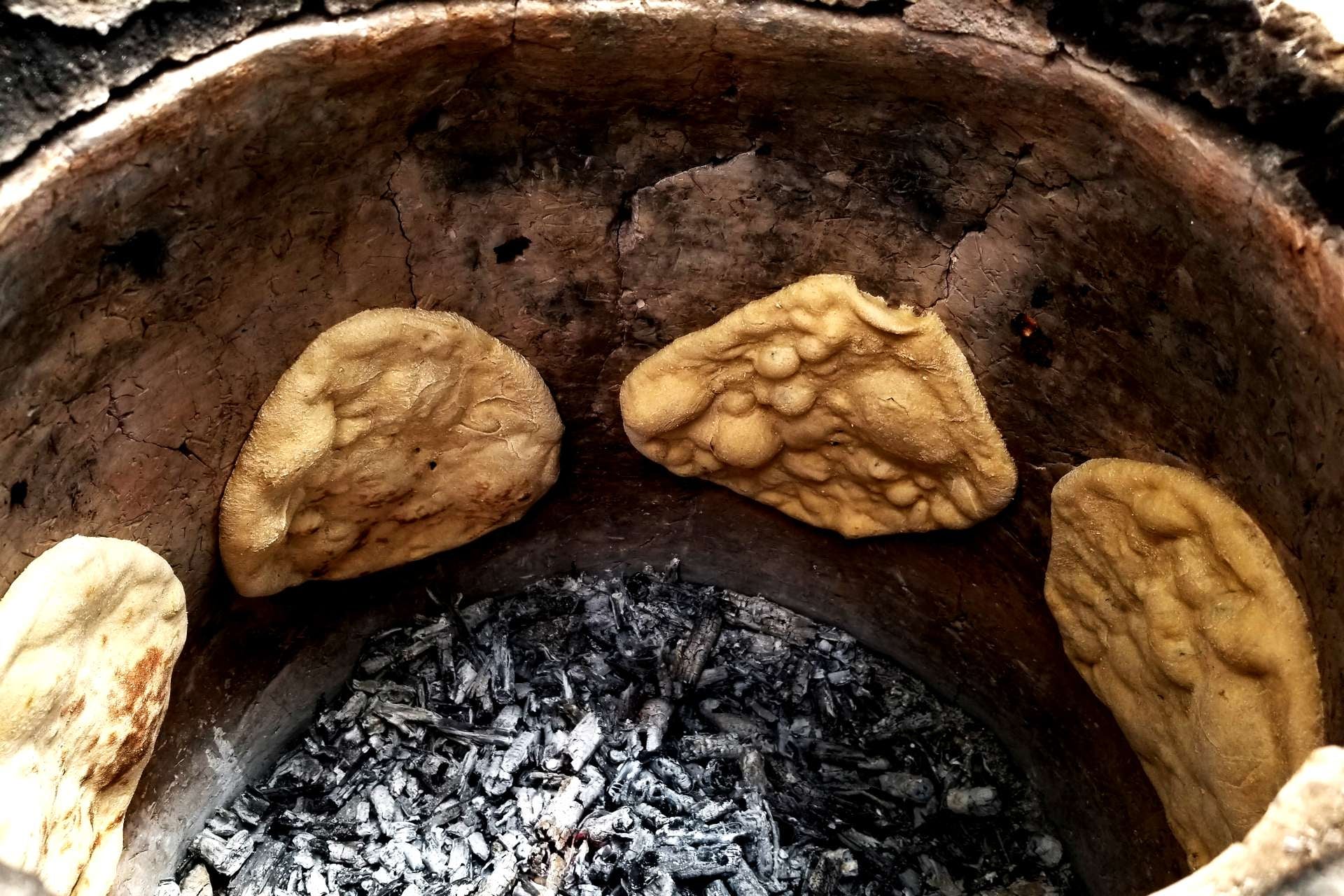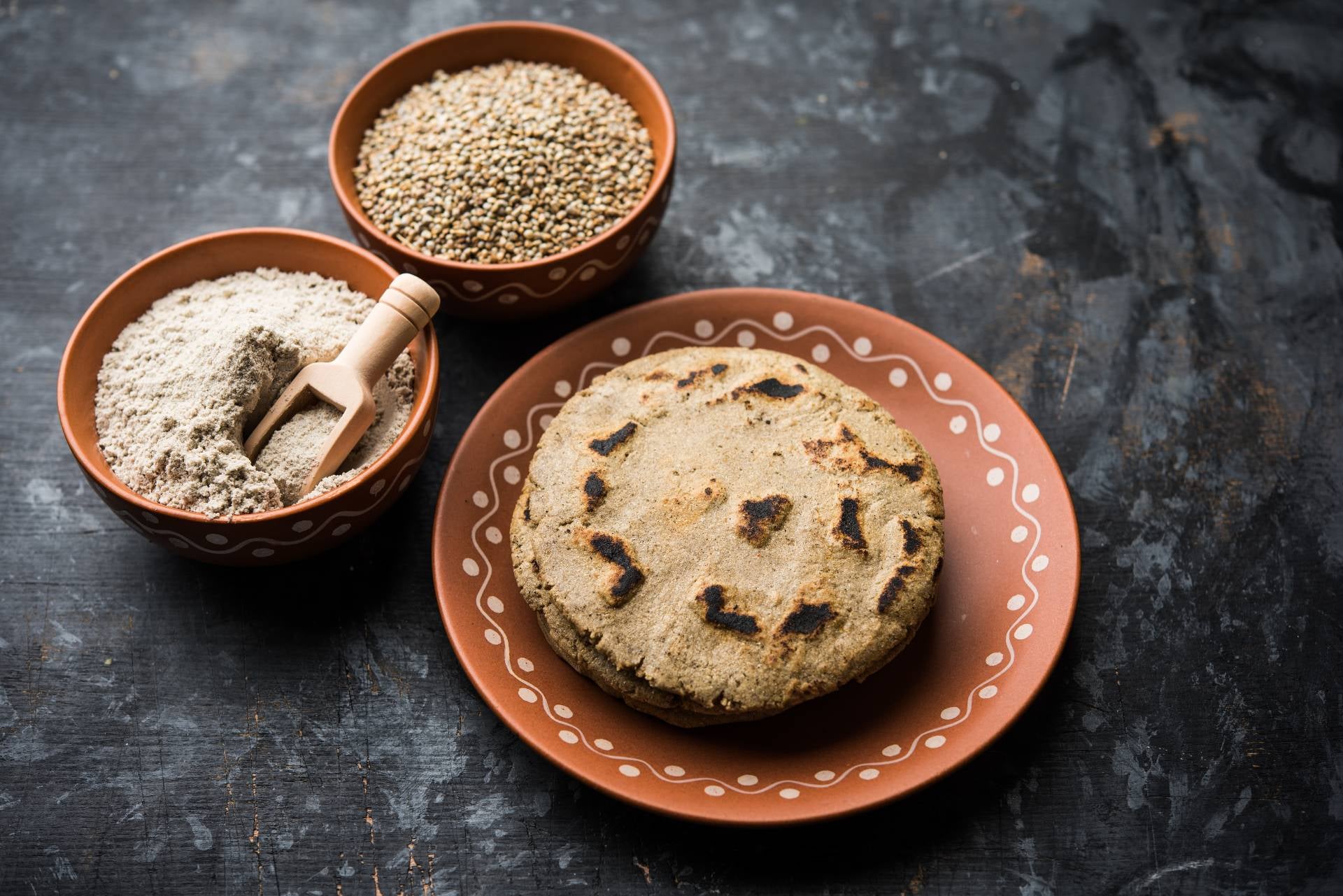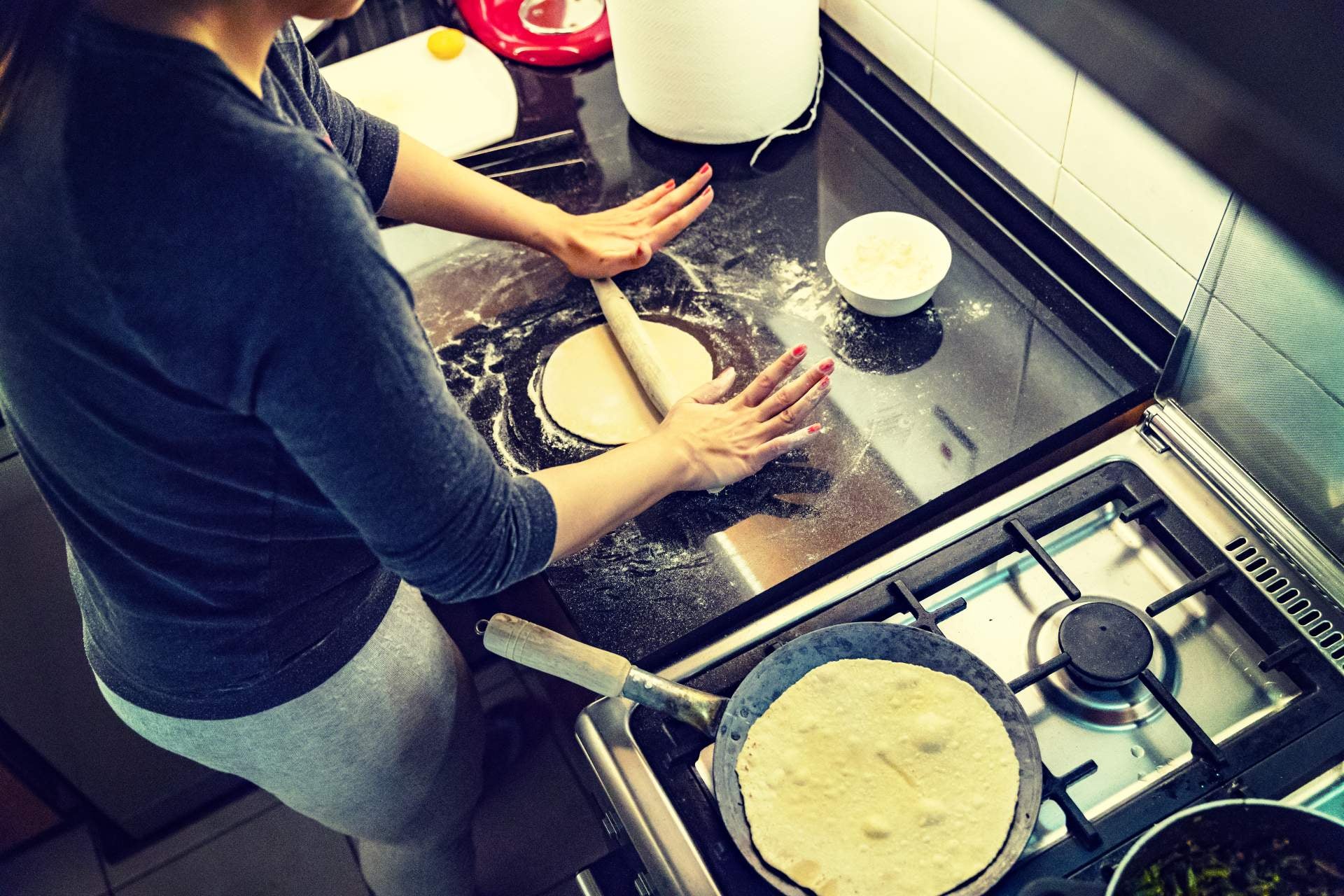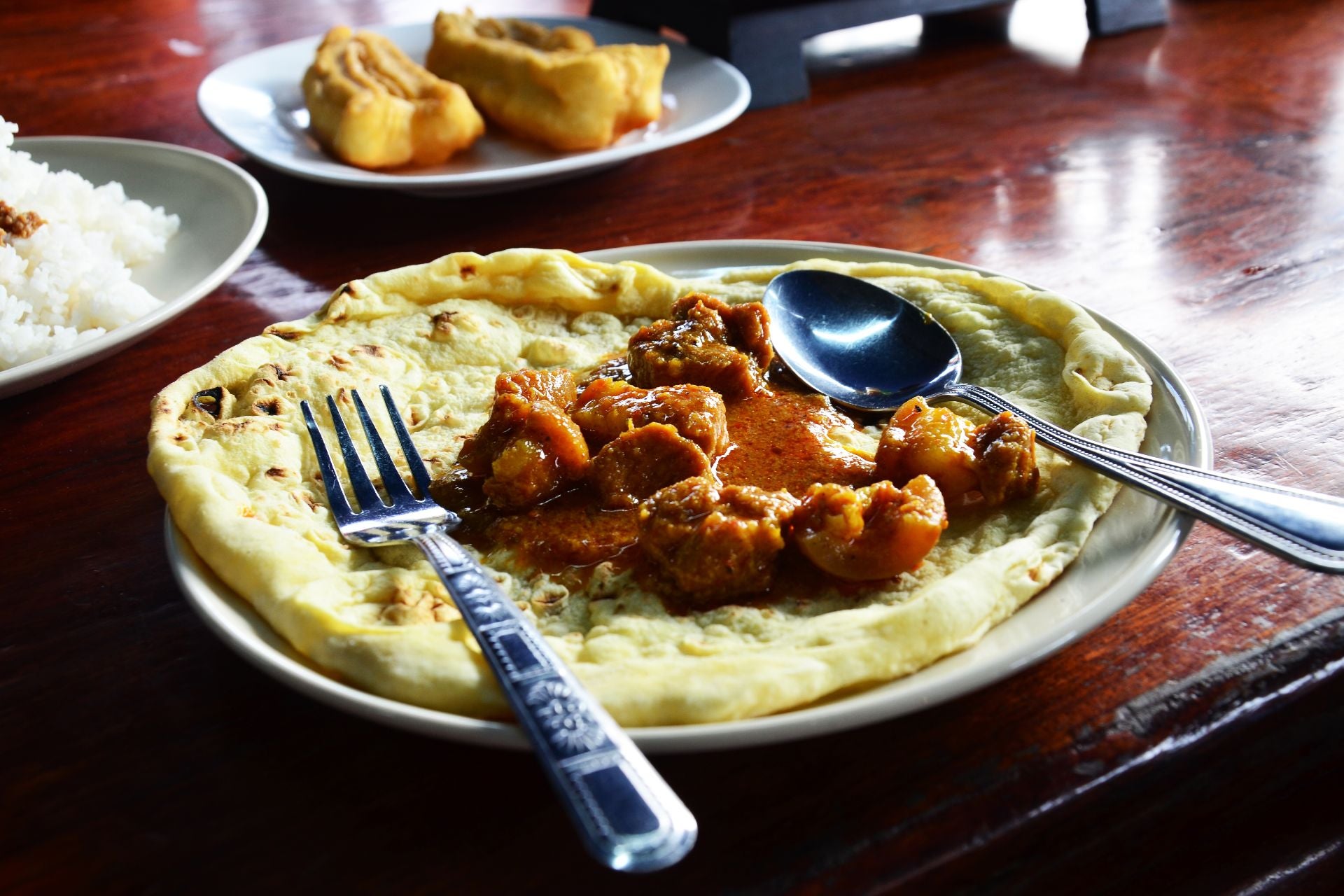Use it to scoop up your food
Tear pieces from the roti and use them to scoop up your food. If you’re eating curry, scoop up the meat and veggies, and dip it all in the sauce, or surwa, at the bottom of the dish.
With a knife and fork
Roti can be eaten with lots of tasty fillings, with curries or potatoes being popular choices. If you don’t want to spill any precious filling out of the sides, or you’d rather keep your hands clean, just use a knife and fork.
Wrap style
A popular choice in the Caribbean, roti can be filled and folded like a wrap, so you can eat them on the go without spilling anything.
Pitta style
Some thicker rotis can be opened up like a pocket and filled that way. These are also a great option for eating on the go.
Use them to soak up dal or surwa
Roti are great for soaking up dal, or that last bit of surwa at the bottom of your curry. Simply tear off a few pieces of roti and soak them in the sauce for a few seconds, then enjoy.
Fried in butter and salt
Sometimes the simple things are the best. No fillings are required for this popular breakfast dish, just a roti and a little butter and salt.
Fried in butter and sugar
Turn your roti into a sweet treat with a little sugar. Simple and delicious.
Storage
Roti are easy to store, and can be reheated in a microwave in as little as a minute. To store in the fridge, simply wrap in aluminium foil and put them in an airtight container, then refrigerate and eat within 1 to 2 days.
If you want to keep them for longer, roti do freeze well, but make sure you separate them into portions beforehand, as you’ll find it impossible to peel what you need from a frozen pile of roti. Spread the roti with a thin layer of butter, and place parchment paper in between each one, then take several freezer bags, place a single portion in each, and freeze them until you need them. Stored in this way they should last for up to 2 months.













